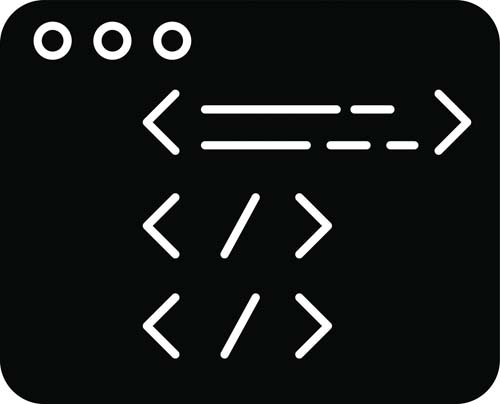如何在TS中对函数的返回值进行类型约束
一、ts中函数参数的类型定义
函数的参数可能是一个,也可能是多个,有可能是一个变量,一个对象,一个函数,一个数组等等。
1.函数的参数为单个或多个单一变量的类型定义
function fntA(one, two, three) {
// 参数 "two" 隐式具有 "any" 类型,但可以从用法中推断出更好的类型。
return one + two + three
}
const aResult = fntA(1, '3', true)
修改后:
function fntA(one: number, two: string, three: boolean) {
return one + two + three
}
const aResult1 = fntA(1, '3', true)
// 如果函数的参数为单个或者多个变量的时候,只需要为这些参数进行静态类型下的基础类型定义就行
2.函数的参数为数组的类型定义
function fntB(arr) {
//参数 "arr" 隐式具有 "any" 类型,但可以从用法中推断出更好的类型。
return arr[0]
}
const bResult = fntB([1, 3, 5])
修改后:
function fntB(arr: number[]) {
return arr[0]
}
const bResult1 = fntB([1, 3, 5])
// 如果参数是数组时,只需要为这些变量进行对象类型下的数组类型定义
3.函数的参数为对象的类型定义
function fntC({ one, two }) {
return one + two
}
const cResult = fntC({ one: 6, two: 10 })
修改后:
function fntC({ one, two }: { one: number, two: number }) {
return one + two
}
const cResult1 = fntC({ one: 6, two: 10 })
// 如果参数是对象,只需要为这些变量进行对象类型下的对象类型定义
4.函数的参数为函数的类型定义
function fntD(callback) {
//参数 "callback" 隐式具有 "any" 类型,但可以从用法中推断出更好的类型
callback(true)
}
function callback(bl: boolean): boolean {
console.log(bl)
return bl
}
const dResult = fntD(callback)
修改后:
function fntD(callback: (bl: boolean) => boolean) {
callback(true)
}
function callback(bl: boolean): boolean {
console.log(bl)
return bl
}
const dResult = fntD(callback)
// 如果参数是函数,只需要为参数进行对象类型下的函数类型定义即可
二、ts中函数返回值的类型定义
当函数有返回值时,根据返回值的类型在相应的函数位置进行静态类型定义即可
返回数字:
function getTotal2(one: number, two: number): number {
return one + two;
}
const total2 = getTotal(1, 2);
// 返回值为数字类型
返回布尔值
function getTotal2(one: number, two: number): boolean {
return Boolean(one + two);
}
const total2 = getTotal(1, 2);
// 返回值为布尔类型
返回字符串
function getTotal2(one: string, two: string): string{
return Bone + two;
}
const total2 = getTotal('1', '2');
// 返回值为字符串
返回对象
function getObj(name: string, age: number): { name: string, age: number } {
return {name,age}
}
getObj('小红',16)
// 返回值为对象
返回数组
function getArr(arr: number[]) :number[]{
let newArr = [...arr]
return newArr
}
getArr([1,2,3,4])
// 返回值为数组
函数返回值为underfinde,仅仅时为了在内部实现某个功能,我们就可以给他一个类型注解void,代表没有任何返回值,
function sayName() {
console.log('hello,world')
}
修改后:
function sayName1(): void {
console.log('无返回值')
}
当函数没有返回值时
// 因为总是抛出异常,所以 error 将不会有返回值
// never 类型表示永远不会有值的一种类型
function error(message: string): never {
throw new Error(message);
}

相关推荐HOT
更多>>
如何添加Java环境变量?
要添加Java环境变量,可以按照以下步骤:并安装Java开发工具包(JDK)、找到Java安装路径、设置JAVA_HOME环境变量、添加Java可执行文件路径到PATH...详情>>
2023-05-04 11:00:56
从零开始学Java之String字符串的编码
对很多小白来说,可能不明白什么是字符编码,也不知道为什么要有字符编码,所以先来给大家简要地介绍一下字符编码。详情>>
2023-05-04 10:21:02
新手速来!几步带你掌握MyBatis Plus
Mybatis-Plus(简称MP)是一款Mybatis的增强工具,它是在Mybatis的基础上实现的简化开发工具。Mybatis-Plus给我们提供了开箱即用的CRUD操作、自动...详情>>
2023-04-28 10:57:09
学习java需要什么基础?基础知识有哪些?
网络编程:了解基本的网络编程概念和协议,熟悉 Java 网络编程 API。建议在学习 Java 之前,先学习一些基础的编程语言,如 C 或 Python 等,这...详情>>
2023-04-28 10:41:14热门推荐
技术干货

























 京公网安备 11010802030320号
京公网安备 11010802030320号